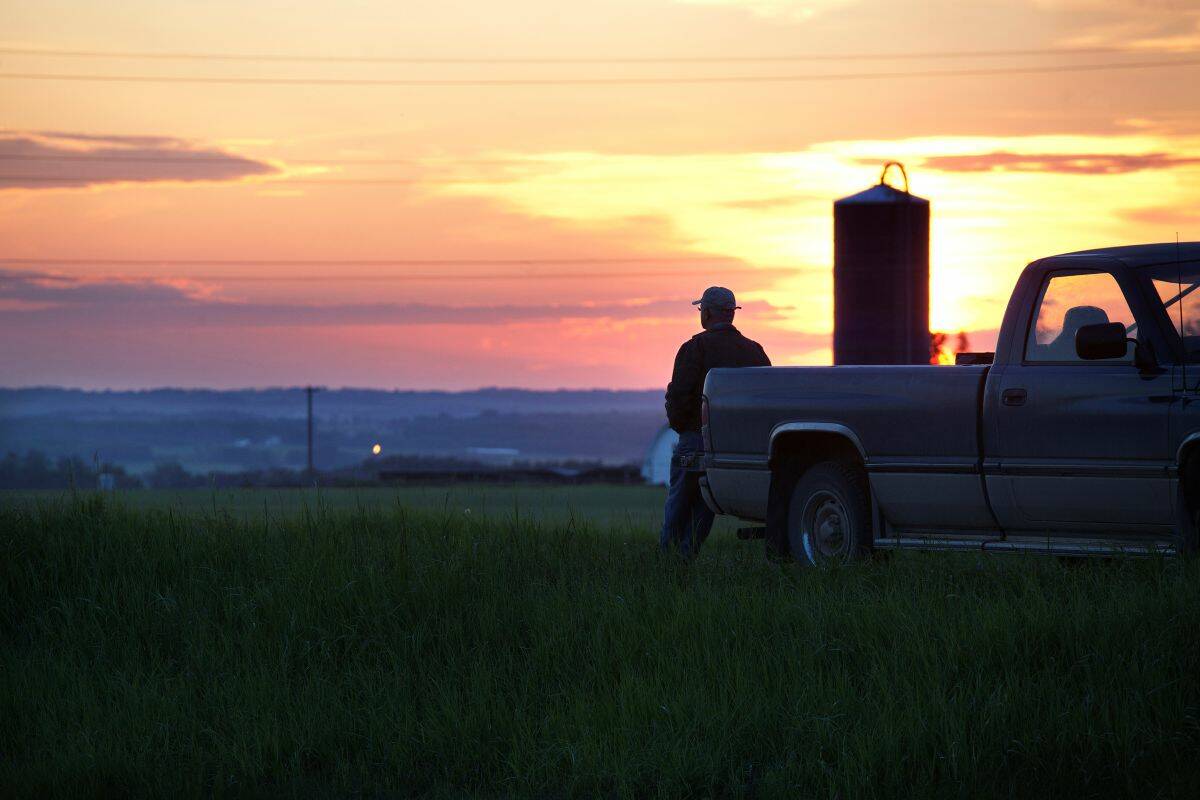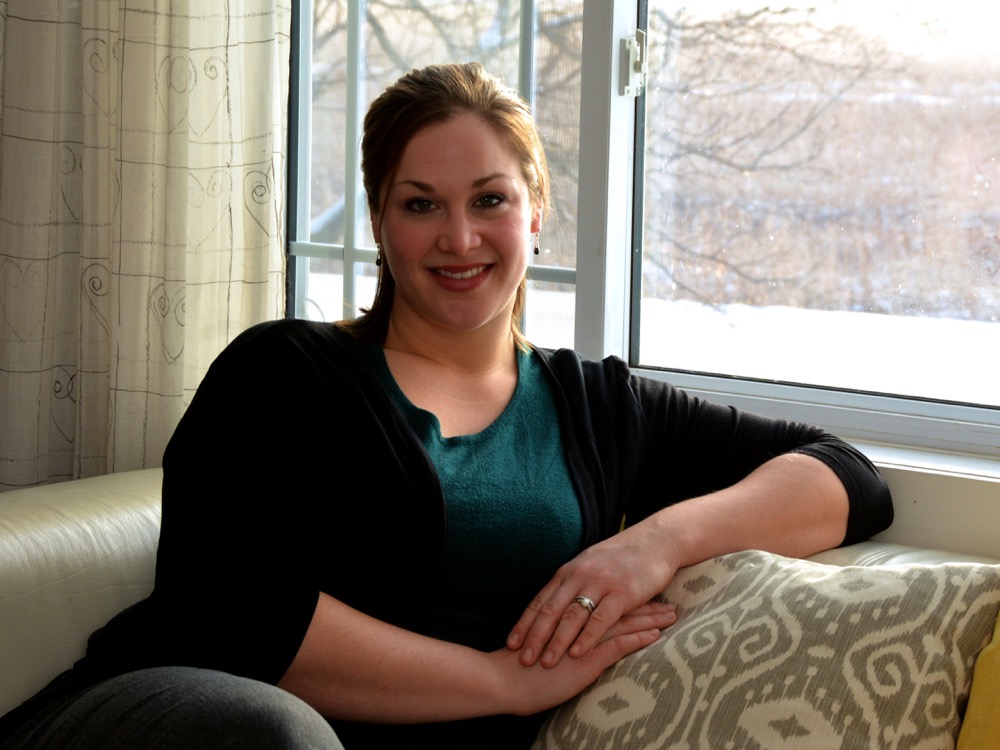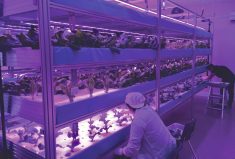If you need to make a big splash, says Nuffield scholar Becky Parker, throw a big rock. A lot of little stones will only create a lot of little ripples.
It’s an insight that Parker has brought home from her Nuffield tour of Britain, New Zealand and Australia, and it’s among the strategies that she now believes could help Canadian agriculture cure the labour shortages that are hampering virtually all sectors of the industry.
Parker kicked off her spring tour at an international conference in France attended by 75 Nuffield scholars from around the world.
Read Also

It doesn’t have to be the end for your farm
Options for farmers without successors to pass on the farm.
“When the speakers talked about the biggest challenges facing agriculture, almost every one mentioned human resources — whether it was a lack of skilled labour, training and education of staff, or an aging farmer population,” Parker says.
But Parker, who holds down a full-time job at Ontario Agri-Food Education (OAFE), also saw that Canada could be more effective in tackling our own workforce challenges.
- More Country Guide: Promoting agriculture around the globe
In particular, we’re hamstrung by duplication, working in silos, and inadequate funding.
The duplication comes from commodity groups, industry associations, education organizations and others all doing their own outreach to young people.
“There are multiple websites saying the same thing, and they are all developing similar pamphlets to go into classrooms,” Parker says. “It’s ineffective and a waste.”
The silos get built when commodity-specific groups don’t work together to encourage young people. If, for example, the fertilizer, food and machinery manufacturing industries focus only on their own needs, they wind up competing against one another.
“The average student sitting in a high school classroom doesn’t see the difference between sheep and dairy cows, tractors and combines,” Parker says. “Can’t we have a bigger impact if we come as the agri-food sector, and present the opportunities through one lens?”
Funding also affects everyone everywhere, but Parker thinks that collaboration and pooling efforts at fundraising would again make us more effective.
Parker’s scholarship is supported by a $15,000 sponsorship from Glacier FarmMedia, which publishes Country Guide plus Grainews, Western Producer and Manitoba Co-operator, among others. She has also received funding from CropLife Ontario Council and additional support from Litherland & Company, a recruiting and placement agency.
Already, Parker has drafted a preliminary list of three tactics that could go a long way in helping the Canadian agri-food industry attract more young people. They include competitions, mentoring, and hands-on work experience.
Competitions are fun, engaging ways to get students excited about possible agricultural careers. In New Zealand, Parker attended a Get Ahead Experience Day co-ordinated by the Young Farmers Club in which high school kids were put into teams of six or seven who then competed against each other at interactive stations.
The 12 stations were run by companies and organizations in the industry, and the young people got to learn about everything from how to grade meat and how to align gears on a tractor to how to figure out which farm is the best to buy in terms of financing. Teams were awarded points on how they worked together to solve problems, and the winning team took home prizes. The New Zealand beef, lamb and dairy industry organizations collaborated to sponsor the half-day event, which was put on in 10 locations through March and April in 2015.
“Students see competitions all the time on television — “Dancing with the Stars,” “Big Brother” — you name it, so it’s familiar to them,” Parker says.
Agricultural mentoring and ambassador programs are also effective tactics used by every country Parker visited.
Some countries highlight ambassadors by profiling them on video or having case studies written up about their careers, or by sending them into classrooms to talk about their experiences.
“The biggest takeaway I got from learning about this is that mentors and ambassadors have to be young enough to relate to the students sitting in the classrooms,” she says.
In Australia, Art4Agriculture is “a network of young people who share a passion to tell others about the pivotal role Australian farmers play in feeding the world,” according to its website. Through a program called “Young Farming Champions,” young people are trained as positive spokespeople for the industry. The challenge they’ve set for themselves is to “be the change” that needs to occur.
A third strategy is to provide young people with hands-on work experience.
“We need to do a better job of getting kids in high school into the labs, offices and farms to get them hooked,” Parker says.
She recognizes there are already a number of programs in place — like co-operative work terms and apprenticeships that are available, but she thinks there needs to be more collaborative effort among the groups that are involved in delivering these programs.
All over the world, there are science, technology, engineering and mathematics networks, called STEMs, that encourage kids to take on careers that use STEM skills. The Scottish Food and Drink Federation has partnered with the U.K. STEM network to ensure that agriculture and food careers are highlighted through that network.
Parker would like to see better co-operation among the industry and educational systems in Canada to produce a more structured approach to drawing young people into agri-food careers.
In many of the countries she travelled to, post-secondary institutions would offer “taster days” in which potential students could experience what exactly would be involved in studying different agri-food-related disciplines.
The way Parker sees it, two levels of encouragement are needed. The first level would be aimed at getting over the agri-food disconnect in the general student population by reaching out through ambassadors, competitions and other resources. A second level would be that, once interested, the students could engage in a hands-on way in a specific career while they’re still in high school.
“We already have co-op and apprenticeship programs in the education system — we need to get the agri-food sector to plug in better,” she says. “It’s a matter of determining what’s already in place, and how do we make the best use of it.”
Parker says that when she asked the average person in any of the countries she had been in what they thought when they heard “agri-food industry,” they all said “farmer” — as if the industry is only primary production.
“Even in my discussions with the agriculture people, I had to continually remind them that it’s about agriculture and food — we have to broaden the perspective of the people who work within the industry,” she says.
There was also the unfortunate and wrong-headed stereotype in the schools that she visited that if you’re not smart enough to go into other things, you can get into farming. In one of her ongoing blog posts, she noted that during one of her many flights, she watched the movie “Interstellar.” In it, a young character was streamed into being a farmer because his test score wasn’t “high enough for college.”
Up next for Parker is touring the U.S. and Canada in 2016 and then reporting back in the fall. Country Guide will continue profiling Parker’s progress as she continues her Nuffield research. She can also be followed on Twitter at @becky_parker_2.















